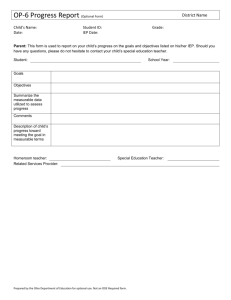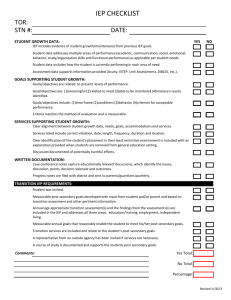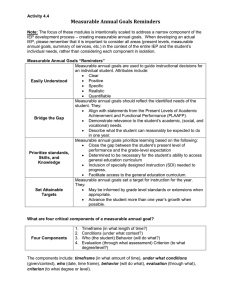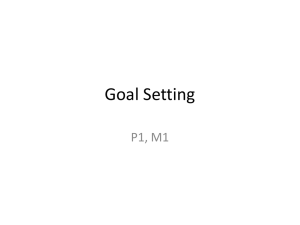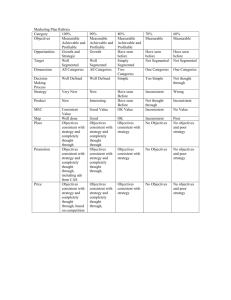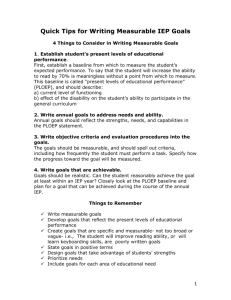IEP SMART Targets
advertisement
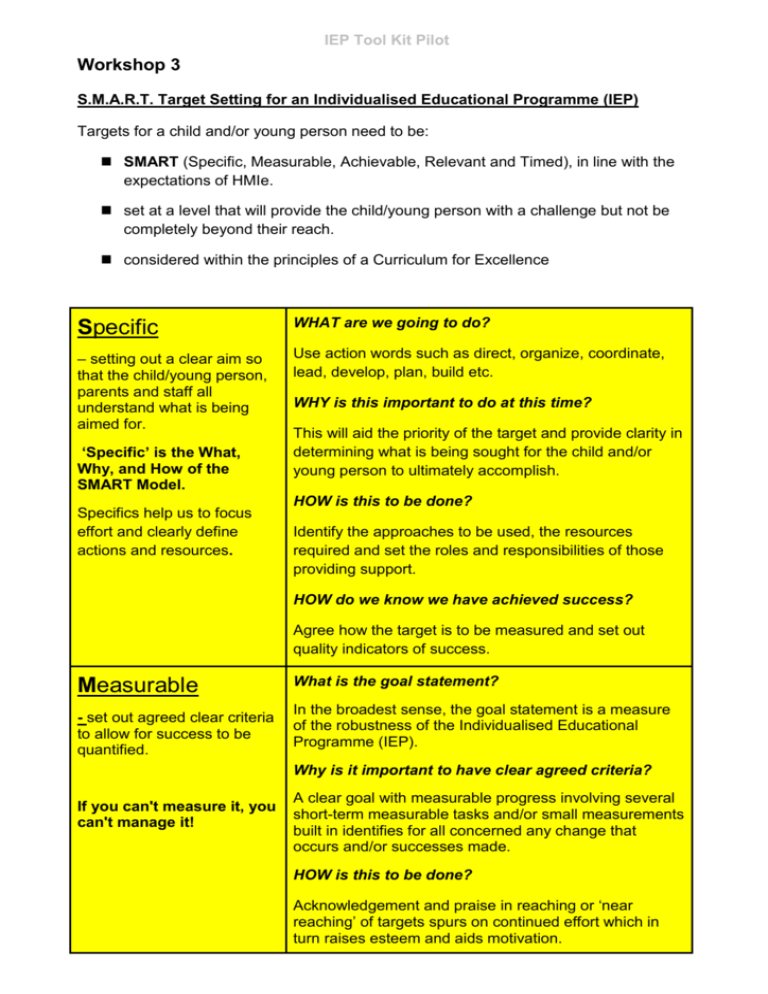
IEP Tool Kit Pilot Workshop 3 S.M.A.R.T. Target Setting for an Individualised Educational Programme (IEP) Targets for a child and/or young person need to be: SMART (Specific, Measurable, Achievable, Relevant and Timed), in line with the expectations of HMIe. set at a level that will provide the child/young person with a challenge but not be completely beyond their reach. considered within the principles of a Curriculum for Excellence Specific WHAT are we going to do? – setting out a clear aim so that the child/young person, parents and staff all understand what is being aimed for. Use action words such as direct, organize, coordinate, lead, develop, plan, build etc. ‘Specific’ is the What, Why, and How of the SMART Model. Specifics help us to focus effort and clearly define actions and resources. WHY is this important to do at this time? This will aid the priority of the target and provide clarity in determining what is being sought for the child and/or young person to ultimately accomplish. HOW is this to be done? Identify the approaches to be used, the resources required and set the roles and responsibilities of those providing support. HOW do we know we have achieved success? Agree how the target is to be measured and set out quality indicators of success. Measurable - set out agreed clear criteria to allow for success to be quantified. What is the goal statement? In the broadest sense, the goal statement is a measure of the robustness of the Individualised Educational Programme (IEP). Why is it important to have clear agreed criteria? If you can't measure it, you can't manage it! A clear goal with measurable progress involving several short-term measurable tasks and/or small measurements built in identifies for all concerned any change that occurs and/or successes made. HOW is this to be done? Acknowledgement and praise in reaching or ‘near reaching’ of targets spurs on continued effort which in turn raises esteem and aids motivation. Recognised and measured progress aids the child and/or young person to stay on track. HOW do we know we have achieved success? If the goal is accomplished there is success. Achievable Why would a goal be set with an inherent challenge? – present a level of challenge within the child/young person’s reach. Any set goal should allow for the appreciation of a child and/or young persons ability, as well as plan to stretch and enhance those skills to heighten interest and spur on commitment for their completion. However, goals set too far out of reach are problematic in committing to and de-motivate. HOW is this to be done? Collation of information and dialogue from the child and/or young person, parent/carer, school staff and other key professionals, along with resource allocation is central in setting the challenge within a given target. Relevant - pertinent to the child and/or young person. HOW is this to be done? Establish concrete criteria for measuring progress toward the attainment of each goal you set. Build upon priority needs Reference to previous strengths and skills along with consideration to resource availability is important. Timed WHY is this important? – achievable short term targets, particularly at the initial stages of the intervention process. Acknowledgement of success continues the momentum of motivation for those involved to remain positive. If progress has been hindered then timely review allows reflection and planning for ‘next steps’ to be pro-active and appropriately responsive not reactive. Individualised Educational Programmes (IEPs) need to be considered within the context of the overall classroom management and integral to the teachers planning and delivery of the curriculum. Education, Culture and Sport Inclusion: IEP Tool Kit Task and Finish Group Page 3 17/02/2016
